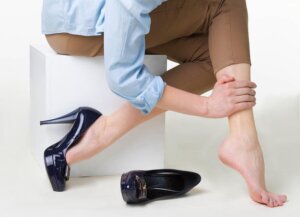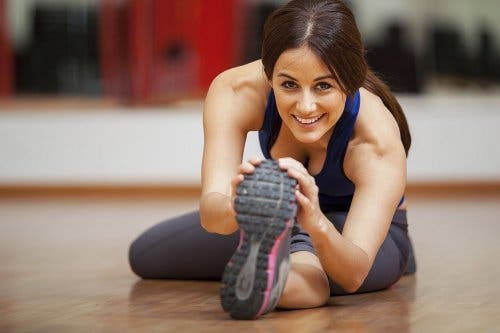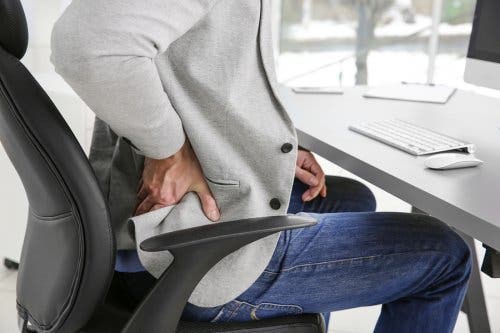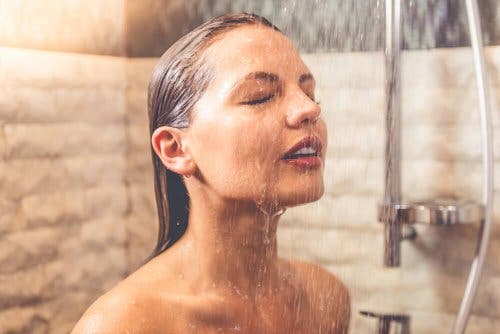5 Healthy Habits To Relieve Varicose Veins

There are a number of healthy habits that can help you relieve varicose veins naturally. Although doctors must operate on the most serious cases with professional procedures, in general you can minimize them with some changes in your daily routine. Does this condition plague you?
Varicose veins are enlarged, twisted veins that often rise above the surface of the skin. They are purple or bluish in color, and usually develop on the legs and feet. Unfortunately, there isn’t a 100% effective method to prevent them. However, there are some things you can do to keep them from getting worse. Discover what to do in this article.
Habits to relieve varicose veins naturally
Varicose veins are caused by a malfunction of the one-way valves of blood vessels, whose function is to regulate blood circulation. Since they’re unable to return blood to the heart optimally, the veins dilate and acquire that characteristic appearance.
In fact, beyond the protruding veins, it can cause other discomforts such as a feeling of heaviness in the legs, pain or swelling in the calves, among others. Fortunately, to avoid these and other complications, there are several options to relieve varicose veins naturally. Start these habits today!
Read also: How to Prepare a Cayenne Pepper Ointment for Varicose Veins
1. Exercise and stretch your legs

When it comes to relieving varicose veins naturally, it’s important to put aside your sedentary lifestyle. Taking a few minutes to exercise and stretch your legs can help improve circulation. In fact, this habit is key to avoiding other diseases that affect your circulatory health.
Tips:
- Spend at least 20 minutes a day doing physical exercise
- Be sure to include exercises to work your legs and calves
- Stretch your muscles before exercising
- If you prefer, you can do a yoga routine. Yoga poses are very beneficial in improving circulation and toning muscles.
2. Raise your legs
For a quick feeling of relief from pain and discomfort of varicose veins, raise your legs toward the ceiling for a few minutes. This simple exercise facilitates blood flow in the lower body, helping it return to the heart.
Tips:
- Put your feet up on a table, or stretch them out on a wall
- You can also lie in bed and rest your legs on three or four pillows
- Leave your legs elevated for 15 minutes straight
3. Avoid standing or sitting for a long time

Keeping in the same posture for a long period of time can cause difficulties with circulation. Standing or sitting for a long time increases the pressure of the veins in the legs and makes it difficult for blood to return to the heart. This even causes blood to pool, and increases swelling.
Tips:
- Move your legs several times a day, especially while sitting at a desk
- Do stretching exercises at least twice a day
- Raise your legs for 15 minutes, two or three times a day
You might like to read: How to Make a Garlic and Lemon Ointment for Varicose Veins
4. Wear compression socks to relieve varicose veins
Compression socks are a very useful resource when it comes to relieving varicose veins. Using them daily helps keep the vein valves in the correct position, promoting blood circulation. In fact, they help reduce swelling, burning and other discomfort caused by this condition.
Tips:
- Wear compression socks during the day. This, among other things, will help you reduce cramps at night.
- Talk to your doctor to find out what the best compression socks are for you: mild, moderate, strong, or extremely strong.
5. Take cold showers

Cold showers serve as therapy to relieve varicose veins and the associated symptoms. When you cover your body with cold water, it causes the blood vessels to constrict, resulting in relief of swelling and the feeling of heaviness. In fact, it helps decrease cramps and general discomfort.
Tips:
- If you feel pain or swelling in your legs at the end of the day, take a shower with cold water.
- Avoid taking hot baths or spending time in hot tubs. Although the heat appears to be relaxing, it actually has a negative effect on people with varicose veins.
To relieve varicose veins keep this in mind!
Vein valves tend to weaken as part of the natural aging process. Therefore, you can’t do much for factors such as age, sex, or family history. However, applying the advice we gave in this article and maintaining a healthy diet can help relieve your symptoms
All cited sources were thoroughly reviewed by our team to ensure their quality, reliability, currency, and validity. The bibliography of this article was considered reliable and of academic or scientific accuracy.
- Mandavia, R., Anwar, M. A., & Davies, A. H. (2014). Varicose veins. In Metabolism of Human Diseases: Organ Physiology and Pathophysiology. https://doi.org/10.1007/978-3-7091-0715-7_40
- Slysz, J., Stultz, J., & Burr, J. F. (2016). The efficacy of blood flow restricted exercise: A systematic review & meta-analysis. Journal of Science and Medicine in Sport. https://doi.org/10.1016/j.jsams.2015.09.005
- Woo, M. T., Davids, K., Liukkonen, J., Jaakkola, T., & Chow, J. Y. (2014). Effects of textured compression socks on postural control in physically active elderly individuals. In Procedia Engineering. https://doi.org/10.1016/j.proeng.2014.06.028
- Miyamoto, N., Hirata, K., Mitsukawa, N., Yanai, T., & Kawakami, Y. (2011). Effect of pressure intensity of graduated elastic compression stocking on muscle fatigue following calf-raise exercise. Journal of Electromyography and Kinesiology. https://doi.org/10.1016/j.jelekin.2010.08.006
- Arora, M. (2017). Management of varicose veins. JK Science. https://doi.org/10.9738/INTSURG-D-14-00084.1
This text is provided for informational purposes only and does not replace consultation with a professional. If in doubt, consult your specialist.








